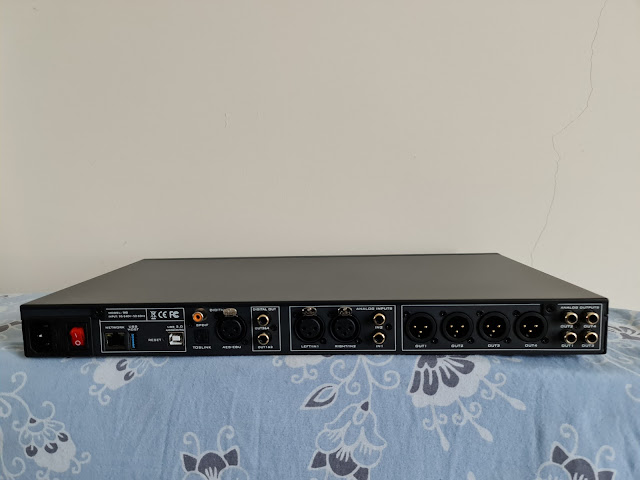Minidsp SHD: A primer
Minidsp SHD;
I was researching the KEF R3, on ASR & was advised to pick up a minidsp SHD instead
,as a logical upgrade to my current stereo system
The device offered a unique set of features
- including balanced (XLR ) & unbalanced ( RCA) Input & output
- along with Analog to digital converter, thus allowing me to incorporate my LP player & SACD player
This would replace a Parasound P6 Preamp, which offers a multitude of connectivity options & bass management.which in its time, offered one of the few options to run a 2.2 system with bass management. Through using a minidsp 2x4 HD in my home theatre for sub management, I was already aware of the superiority of the bass management offered by going the minidsp route.With the added advantage of Dirac Live to calibrate the whole system, I quickly decided to adopt the minidsp SHD.
I was aware, that I would face a learning curve, in setting this up well.
Warily I accepted the challenge & incorporated the SHD, in to my rig.
Taking out the P6 , out of my audio chain.
The SHD is half the height of the P6 & has a big legible display.
Comes with a functional, uncluttered remote, which is non back lit.
The power takes about 5 seconds to start, after clicking the remote.
A dim red light is visible in the display, when powered off using the remote.
You need to register at the minidsp site & use the included software key, to download the software
You also need to register at the dirac site to download the Dirac live software
Install the dirac soft ware but do not open it, you have to start dirac live from the minidsp aoftware.
A umik has to be purchased separately & is not included in the package
Switched to the USB input, connected my laptop , plugged in the umik
The above process took me a few tries to get right, had issues with windows .net
Had to switch from my Microsoft surface to a regular windows laptop.
Finally switched to using a macbook air, which I am currently using
Once all the software was installed I ran REW 5.21
Ran the minidsp software connected & synched with the SHD
The minidsp SHD manual suggests some backend work on the minidsp, prior to running dirac live
I run a 2.2 system, Revel M 106 & SVS PB 2000 Pro x 2
My prep work routine, involves measuring the subs, with no crossover enabled
Making sure both subs & both mains are at the same levels
I run my subs around 6 db above the mains, keeping in mind the Fletcher Munson
curve & my listening preference.
Aligning the subs, using the auto align tool in REW, (dont forget to add the delay you get from the tool, to the appropriate sub in minidsp output) & then eq’ing flat to 120 Hz
I then enable low pass filter at 80 Hz & low pass filter at 80 Hz &
import the eq filter in to the minidsp
Then I run the, Dirac live software, from the minidsp software
I had best results on Dirac with using calibration for the narrowest listening
space, shown as a chair in the interface
Fine tuning the above process took me days, there is, a stiff learning curve
involved.
Be ready, to sink a lot of time, into this project
The results are indeed excellent & worth the effort, in my opinion
PS I still have not been able to get my Spotify plug in installed in volumio,
working on that
Using a google chromecast audio, using mini toslink to toslink cable, currently
Updates 11/4/22:
A couple of errors in my process
1) I was not getting the auto aligned summed subs to work, figured out that I had forgotten, to add the delay you get from the tool, to the appropriate sub in minidsp output, duh!
2) You need to run a timing reference, had set it by default to my left main speaker.Have to leave the timing reference channel unmuted to get timing reference to work
After correcting the above;
My latest work flow product
1 Post SVS PEQ for 40 hz correction
2 Post Dirac
3 Post SVS PEQ for 40 hz correction







Comments
Post a Comment